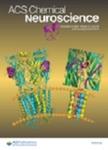版权所有:内蒙古大学图书馆 技术提供:维普资讯• 智图
内蒙古自治区呼和浩特市赛罕区大学西街235号 邮编: 010021

作者机构:Zhejiang Univ Coll Pharmaceut Sci Hangzhou 310058 Zhejiang Peoples R China Zhejiang Univ State Key Lab CAD&CG Hangzhou 310058 Zhejiang Peoples R China Jiangsu Univ Technol Sch Elect & Informat Engn Inst Bioinformat & Med Engn Changzhou 213001 Peoples R China
出 版 物:《ACS CHEMICAL NEUROSCIENCE》 (ACS化学神经科学)
年 卷 期:2019年第10卷第1期
页 面:677-689页
核心收录:
学科分类:0710[理学-生物学] 1007[医学-药学(可授医学、理学学位)] 071010[理学-生物化学与分子生物学] 081704[工学-应用化学] 1001[医学-基础医学(可授医学、理学学位)] 07[理学] 08[工学] 0817[工学-化学工程与技术]
基 金:National Key R&D Program of China [2016YFA0501701, 2016YFB0201700] National Science Foundation of China [21575128, 81773632]
主 题:Docking-based virtual screening homology model class A GPCRs antagonist MD simulation induced-fit docking
摘 要:The number of solved G-protein-coupled receptor (GPCR) crystal structures has expanded rapidly, but most GPCR structures remain unsolved. Therefore, computational techniques, such as homology modeling, have been widely used to produce the theoretical structures of various GPCRs for structure-based drug design (SBDD). Due to the low sequence similarity shared by the transmembrane domains of GPCRs, accurate prediction of GPCR structures by homology modeling is quite challenging. In this study, angiotensin II type I receptor (AT1R) was taken as a typical case to assess the reliability of class A GPCR homology models for SBDD. Four homology models of angiotensin II type I receptor (AT1R) at the inactive state were built based on the crystal structures of CXCR4 chemokine receptor, CCRS chemo-kine receptor, and delta-opioid receptor, and refined through molecular dynamics (MD) simulations and induced-fit docking, to allow for backbone and side-chain flexibility. Then, the quality of the homology models was assessed relative to the crystal structures in terms of two criteria commonly used in SBDD: prediction accuracy of ligand-binding poses and screening power of docking-based virtual screening. It was found that the crystal structures outperformed the homology models prior to any refinement in both assessments. MD simulations could generally improve the docking results for both the crystal structures and homology models. Moreover, the optimized homology model refined by MD simulations and induced-fit docking even shows a similar performance of the docking assessment to the crystal structures. Our results indicate that it is possible to establish a reliable class A GPCR homology model for SBDD through the refinement by integrating multiple molecular modeling techniques.